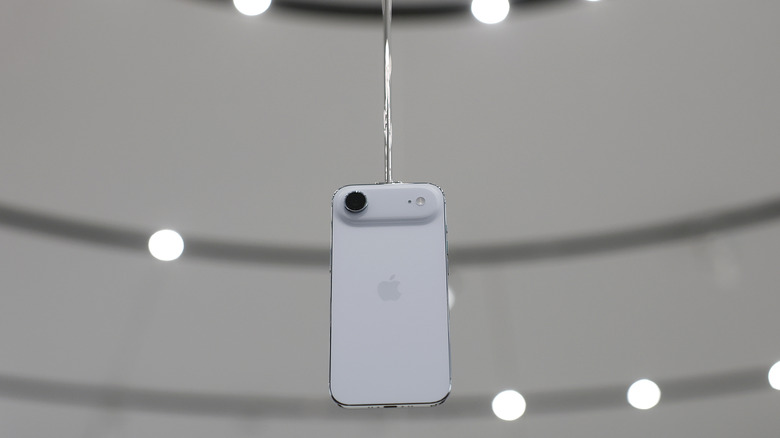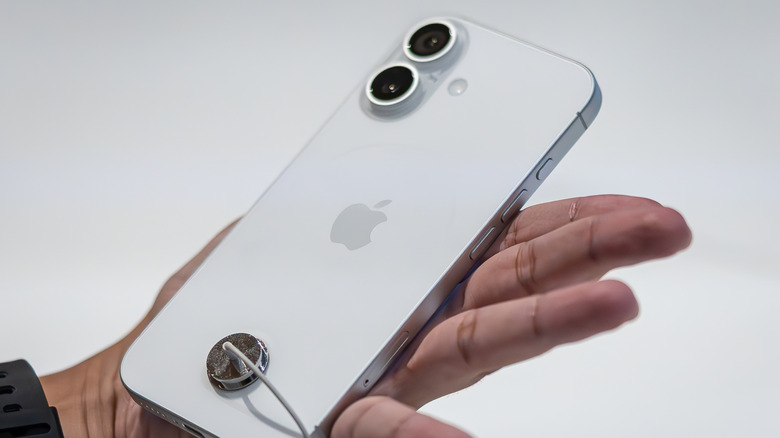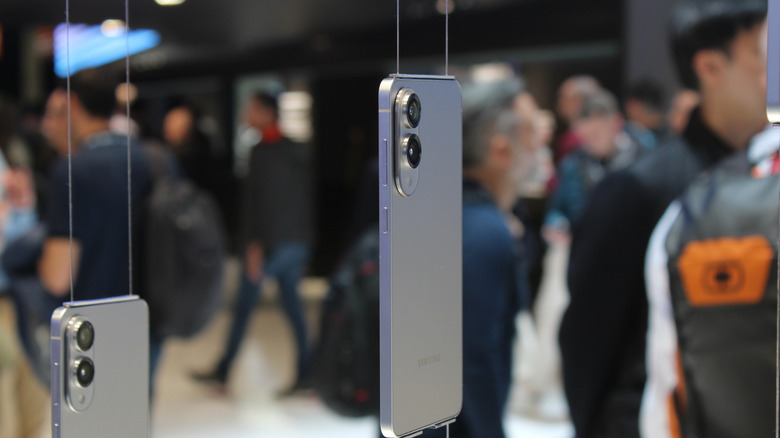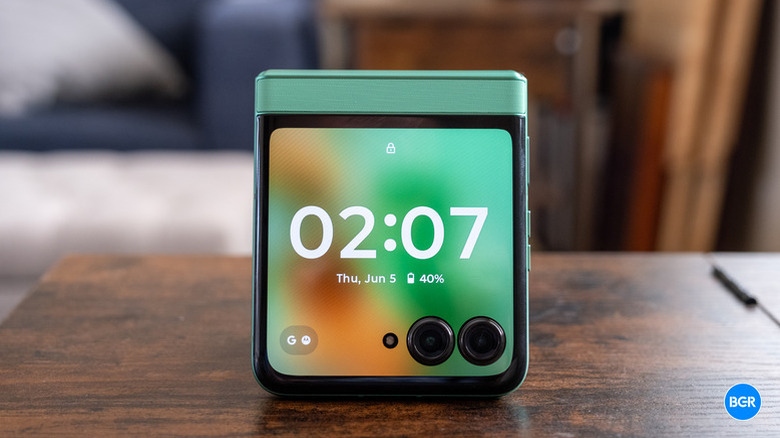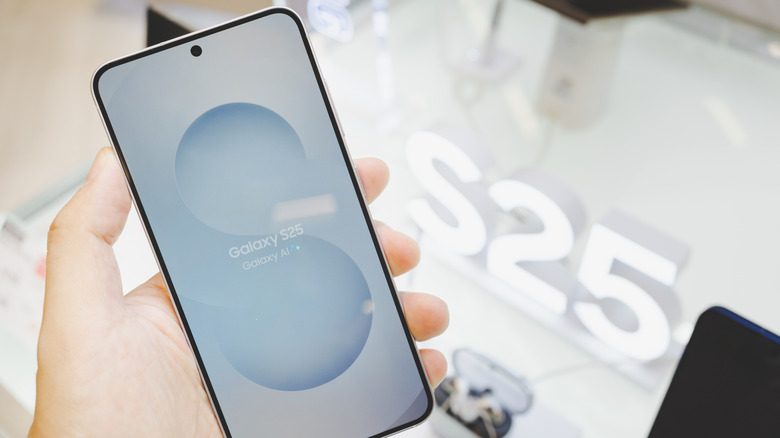4 Cheaper Alternatives To The iPhone Air
We may receive a commission on purchases made from links.
The iPhone Air is Apple's first attempt at making an ultra-thin iPhone, and at 5.6 millimeters in thickness, the company has managed to achieve it without too many compromises. It's powered by the same A19 Pro chip used in the iPhone 17 Pro and Pro Max, minus one GPU core, and has the same bright ProMotion OLED display as the other iPhone 17 models. It also features a more durable titanium casing than the other iPhones released this year. The thinness does come with a few drawbacks. When compared to the Pro model, our first real-life iPhone Air battery test indicates that you get about an hour less of use per charge, and you also lose out on the ultrawide and telephoto cameras.
However, one thing that some folks can't digest is its price tag, which is $999 for the base 256GB model and $1,399 for the 1TB model. So, if this price tag has put the iPhone Air out of your budget, what are your alternatives? We have compiled four smartphones that cost less than the iPhone Air and are on the slimmer side of the smartphone spectrum.
Apple iPhone 17
If you prefer Apple's walled garden, the iPhone 17 is the next best thing to the iPhone Air for you. Sure, it's not particularly thin, but at 7.95 millimeters, it's also not unreasonably thick. More importantly, it's part of Apple's 2025 lineup, so you won't miss out on any of the new features, and the company has genuinely made this base iPhone model a pretty attractive choice for most buyers.
It packs a 120Hz ProMotion OLED display, and its new selfie camera, now equipped with a square sensor, was easily one of the most underrated reveals from the iPhone 17 event. It's also powered by the A19 chip, which is more than powerful enough for most people. Some features are in fact better on the iPhone 17 than the iPhone Air, such as a bigger battery, faster wired and wireless charging, and the presence of stereo speakers. It also has mmWave 5G support and an ultrawide camera.
All this will set you back $799 for the 256GB model and $999 for the 512GB model, which is a good $200 less than the iPhone Air. If you're looking to save even more money, the $599 iPhone 16e is another option. It is even thinner than the iPhone 17 at 7.8 millimeters, but it is not as powerful and misses out on several features, including a ProMotion display, MagSafe charging, and Camera Control button.
Samsung Galaxy S25 Edge
If getting a premium smartphone with an ultra-thin profile is your main consideration, the Android-powered Galaxy S25 Edge is certainly worth a look. Although it carries a higher list price than the iPhone Air, it can be found as low as $700 for the base 256 GB model and $820 for the 512 GB model. These discounts may increase or become more frequent as we get closer to the holiday season.
The Galaxy S25 Edge is only 5.8 millimeters thick and weighs 163 grams, making it the only other traditional high-end phone you'll get in the U.S. with a similar thickness and weight to the iPhone Air. It also features a titanium frame and has Corning-made glass on both front and back for enhanced durability. Other similarities to the iPhone Air include an LTPO OLED display with a 120Hz refresh rate and support for Wi-Fi 7.
The rest of the features aren't too shabby either. It's powered by Qualcomm's Snapdragon 8 Elite chip and comes with 12GB of RAM, which can easily handle whatever you throw at it, including mobile gaming and multitasking. However, as we noted in our review of the S25 Edge, the phone makes some sacrifices on the camera and battery fronts. While it has two cameras, unlike the iPhone Air's sole camera, the S25 Edge gives up the telephoto shooter found on the rest of the Galaxy S25 lineup.
Motorola Razr (2025)
The Motorola Razr (2025) may not be as ultra-thin as the iPhone Air, but its clamshell form factor can help you stand out, just like the Air does with its slim design. More importantly, it's priced at just $700 and is often discounted to $600 for its sole 256GB model, making it significantly more affordable than the slim iPhone.
As we mentioned in our Razr (2025) review, the phone has a lot going for it, including its sleek design, solid build quality, and great battery life. It also features a 6.9-inch LTPO OLED primary screen with a 120Hz refresh rate and a 3.6-inch OLED cover display with a 90Hz refresh rate, both of which are pretty bright and vibrant. Additionally, the phone has decent cameras; however, the iPhone Air will likely beat it in an image and video quality showdown.
To keep costs down, Motorola has included a mid-range chip, the MediaTek Dimensity 7400X, which can impact performance. While the phone runs smoothly in most everyday use cases, you may find games taking longer to load or occasional slowdowns compared to a more high-end phone. Otherwise, the 2025 Razr is a great flip-style foldable that doesn't cost an arm and a leg.
Samsung Galaxy S25
The Galaxy S25 is the most affordable flagship in Samsung's 2025 lineup and a "relatively" smaller phone in a world otherwise obsessed with large phones. Although it's 7.2 millimeters thick, it weighs less than the iPhone Air, which is likely due to its aluminum frame, making it a good option for anyone looking for a slim and light high-end phone.
It's powered by the same Qualcomm 8 Elite chip as the S25 Edge, and in our Galaxy S25 review, we found it to be just as capable as any other top-tier Android phone. The Galaxy S25 also sports a good-looking design and a beautiful LTPO OLED display with a 120Hz refresh rate.
Other highlights include a good triple camera setup, which may not be enough to take on the Pro iPhone models, but is more versatile than the single camera you get on the iPhone Air. Battery life is also decent, and you get support for both wireless and reverse wireless charging. But unlike the Air, there are no built-in magnets for magnetic charging or accessories.
Finally, the Galaxy S25 is reasonably priced at $800 for the base 128GB model and $860 for the 256GB model.
